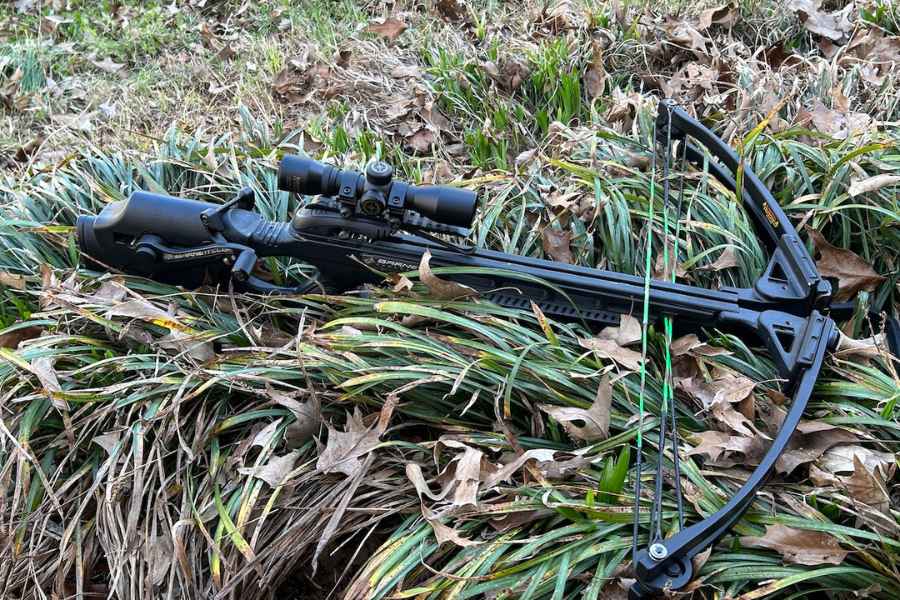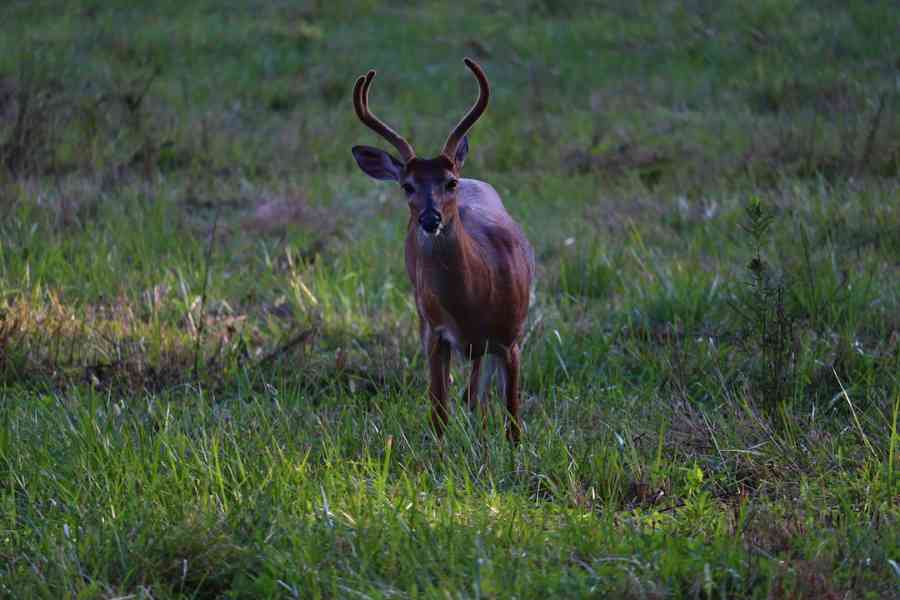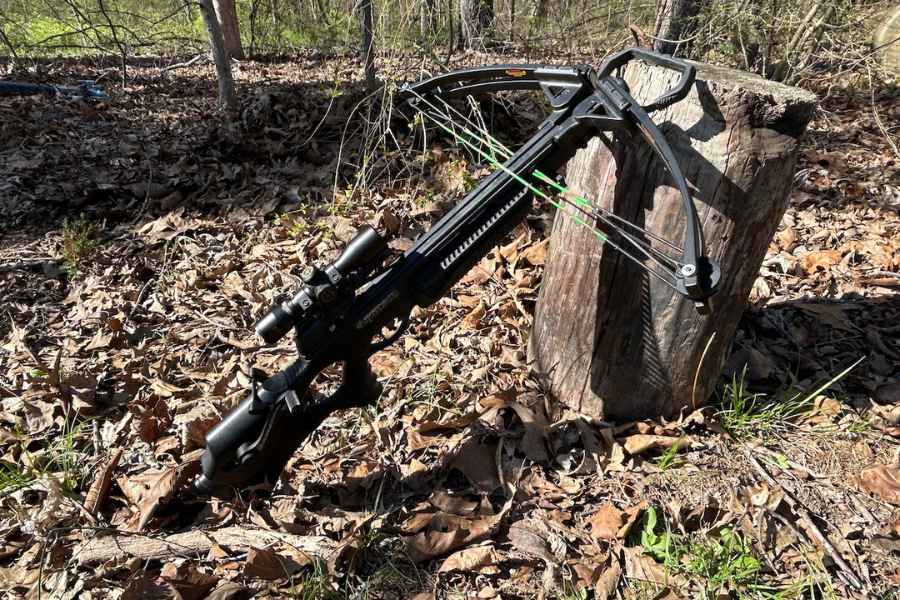It is not uncommon for beginning crossbow archers to question how far their crossbow can shoot. Of course, this curiosity is only normal, as most wish to understand the full range of capabilities that their equipment holds.
However, the answer to this quandary is not always as simple as one might assume.
While the exact distance that a crossbow can shoot often differs from one particular crossbow to the next, there are some general averages that can be explored.
read.. Best Crossbow Targets Reviewed
However, only sufficient range time and dedicated testing will answer this question concisely in any one particular case.
Nonetheless, this topic itself is intriguing enough that a deep dive into crossbow performance is easily warranted.
Contents (Jump to Topic)
ToggleThe Distance Equation
Casting the notion of overall accuracy to the side, a modern crossbow can be shot to distances of up to several hundred yards.
This, of course, assumes that the crossbow in question was to be aimed in the required manner to compensate for the loss of velocity and natural arrow/bolt drop as it occurs across a flat plane.
While it might not be practical to purposely shoot at these distances, there are some key takeaways worth considering based on the presumed maximum distances mentioned above.
The most important of these points centers around the fact that a haphazardly fired bolt or arrow can travel great distances before coming to rest. Therefore, one should always be certain that a safe backstop is present in any shooting situation.
The Outer Limit

For the sake of discussion, most current and prospective archers will find it interesting to know that, on occasion, crossbow bolts/arrows have been fired to extreme distances, albeit with less than stellar accuracy.
These instances have been documented in the record books and passed down via oral history to be shared time and time again.
In fact, it is no secret that crossbows were utilized during medieval times to defend territory, oftentimes with archers perched at elevated locations. Many such shots were said to have come at a considerable distance.
Whether these depictions were exaggerated or embellished is largely a matter of speculation. However, one would likely be safe in saying that these archers did not hesitate to cast arrows at any distance they deemed necessary, especially as a matter of defense.
Nonetheless, there is one feat of crossbow distance shooting that has yet to be surpassed. In 1988, Harry Drake fired a crossbow arrow to an astonishing distance of 2,047 yards.
While accuracy was not the aim of this feat, it is extremely impressive when one considers the fact that this distance equates to more than a mile.
What Affects Maximum Crossbow Distance?
As mentioned, there are a handful of variables that ultimately affect a crossbow’s maximum shot distance.
Each of these variables applies universally and factors into the equation of distance without exception. These variables are as follows.
Arrow/Bolt Speed
The maximum speed at which a crossbow fire plays an enormous role in determining the furthest distance that an arrow can travel.
This is due to the fact that an arrow or bolt’s trajectory is ultimately a product of arrow speed. A bolt or arrow will descend quicker in its flight path at lower speeds, than faster speeds, thereby impacting the ground earlier.
Arrow/Bolt Weight
The weight of an individual bolt or arrow also influences the ultimate maximum distance of a shot. This is due to the fact that heavier bolts or arrows are slower in flight than lighter bolts or arrows fired from a crossbow of the same speed.
Therefore, the trajectory of such projectiles is adversely affected, and total shot distance is limited.
Wind Resistance
Wind resistance is an often overlooked variable that applies to the maximum distance of a shot fired from a crossbow.
Shooting against the prevailing wind can significantly slow an arrow or bolt, especially when fired at great distances. This, again, causes a deviation in trajectory, forcing the earlier impact of an arrow or bolt into the ground below.
Point Of Aim
An archer’s point of aim also impacts an arrow or bolt’s ultimate distance of travel. This stems from the fact that a certain degree of arrow drop can be compensated for when aiming accordingly.
This, in turn, provides an arrow or bolt with a much greater chance of traveling to significant distances before impacting the ground and ending flight as a whole.
The Ethical Factor (Hunting)

As stated above, there is a significant difference between shooting for distance and shooting for accuracy when firing a crossbow. This is a fact that should be weighed heavily when hunting.
Just because you “might” be able to hit your target at a certain distance does not mean that you should attempt to do so when hunting.
It is every hunter’s responsibility to know the outer extent of their effectiveness range. Likewise, it is also a hunter’s responsibility to pull from this knowledge when metering whether or not to take a particular shot.
read.. recruiting new hunters
Shooting a target in your backyard at a 100-yard distance with some degree of accuracy is a completely different ballgame than shooting at a live animal.
There are nearly too many variables to count when attempting such shots in the field.
For most hunters who are proficient with their crossbow, 40-50 yards serve as a reasonable maximum shot distance in the field.
However, determining one’s maximum effective range when afield is largely a personal decision and one best made when being completely honest with yourself.
Therefore, one archer’s maximum effective range might differ from that of the next archer. Only you can truly determine what your own effective shooting range is.
Practicing At Distance for Fun
If you would like to practice shooting your crossbow at lengthy distances for fun, there are a few housekeeping matters that should be kept in mind.
The first of which involves taking precautions to avoid losing costly arrows or bolts in the event of an errant shot.
One way to prevent this loss is by sitting a sizable catchment object behind the target you are shooting. Hay bales work perfectly for this task and will not damage an arrow.
Another matter worth keeping in mind while preparing to practice shooting your crossbow at significant distances is that such practices are best reserved for implementation in rural or sparsely populated areas.
A lot can go awry when shooting at lengthy ranges, quickly sending an arrow veering far off course. When shooting in a neighborhood or a more populated area, this leaves the potential for property damage, injury, or worse.
Additionally, when shooting at lengthy distances, it is advisable to work back slowly to the ultimate distance that you intend to shoot rather than simply skipping to this distance in the first place.
Doing so allows you to adjust your point of aim incrementally, thereby modifying your arrow’s trajectory a little at a time rather than all at once.
This lessens the chance of shooting significantly over or under your target, potentially losing an arrow or bolt.







Conversation | 2 comments:
What is the phrase total shit distance limited ? Might edit that one to shot distance…
thank you!